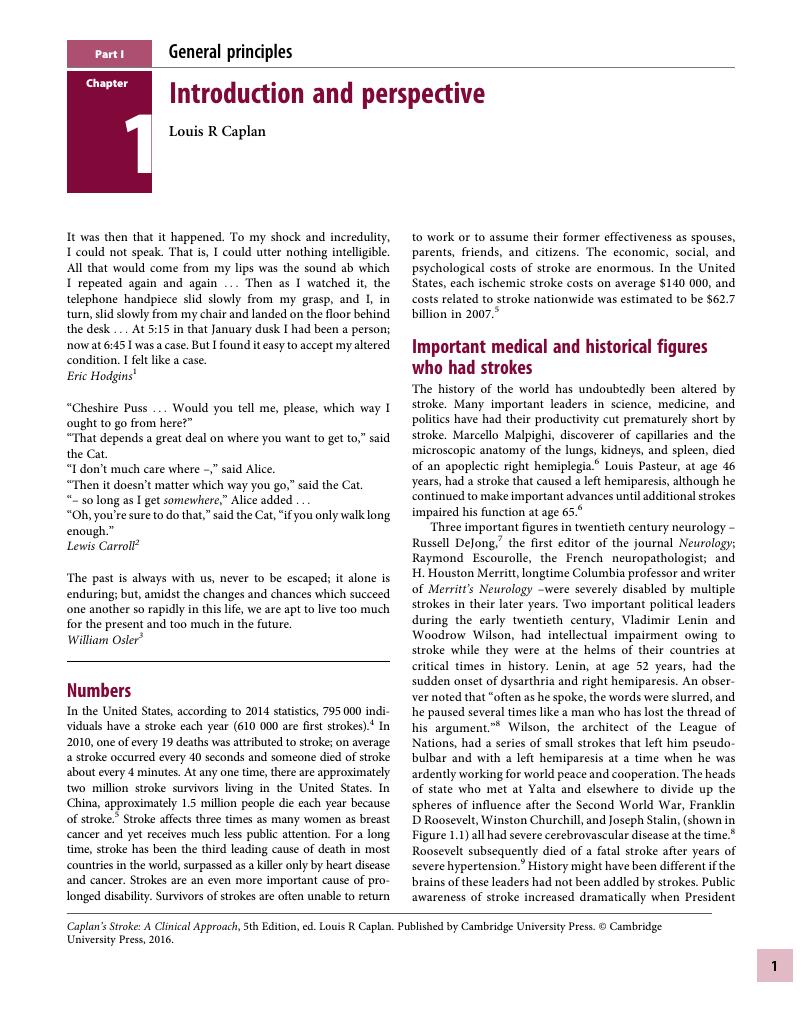Book contents
- Caplan’s Stroke
- Caplan’s Stroke
- Copyright page
- Contents
- Preface
- Contributors
- Part I General principles
- Chapter 1 Introduction and perspective
- Chapter 2 Pathology, anatomy, and pathophysiology of stroke
- Chapter 3 Diagnosis and the clinical encounter
- Chapter 4 Imaging and laboratory diagnosis
- Chapter 5 Genetics of stroke
- Chapter 6 Treatment
- Part II Stroke syndromes
- Part III Prevention, complications, and recovery–rehabilitation
- Index
- Plate section
- References
Chapter 1 - Introduction and perspective
from Part I - General principles
Published online by Cambridge University Press: 05 August 2016
- Caplan’s Stroke
- Caplan’s Stroke
- Copyright page
- Contents
- Preface
- Contributors
- Part I General principles
- Chapter 1 Introduction and perspective
- Chapter 2 Pathology, anatomy, and pathophysiology of stroke
- Chapter 3 Diagnosis and the clinical encounter
- Chapter 4 Imaging and laboratory diagnosis
- Chapter 5 Genetics of stroke
- Chapter 6 Treatment
- Part II Stroke syndromes
- Part III Prevention, complications, and recovery–rehabilitation
- Index
- Plate section
- References
Summary

- Type
- Chapter
- Information
- Caplan's StrokeA Clinical Approach, pp. 1 - 18Publisher: Cambridge University PressPrint publication year: 2016



